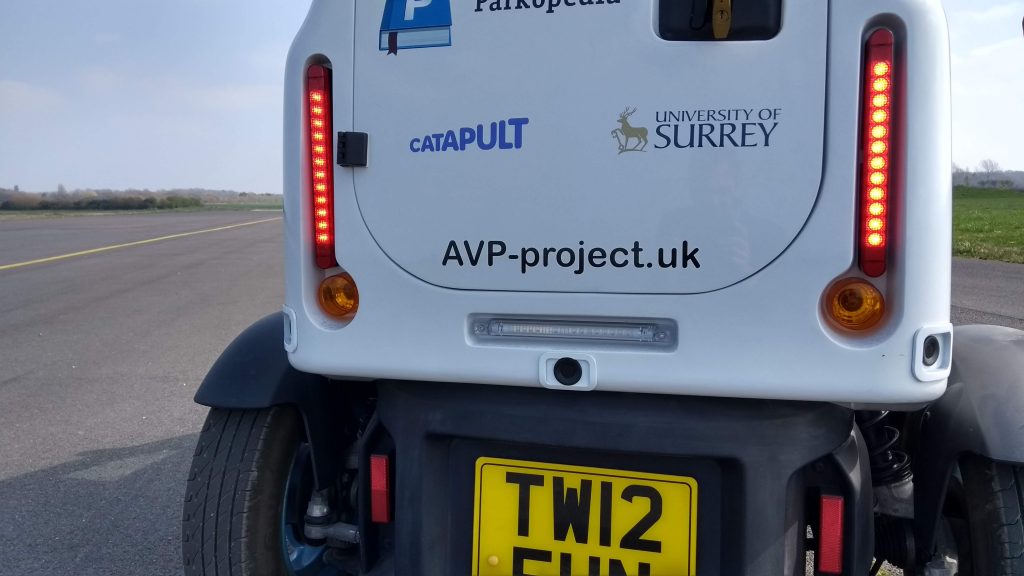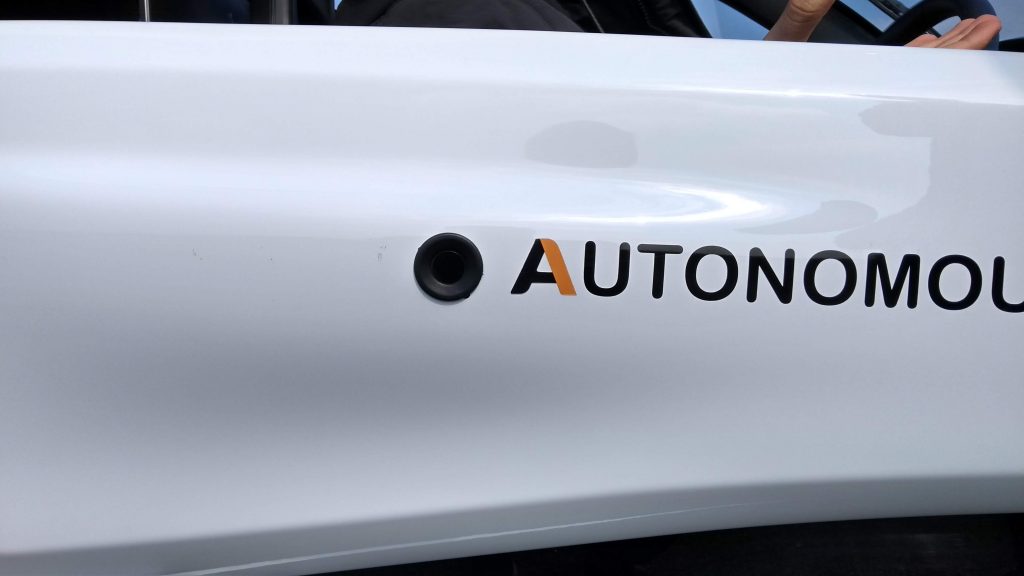Safety is the highest priority at the Autonomous Valet Parking project. As we seek to demonstrate that Parkopedia’s maps are suitable for localisation and navigation within covered car parks, our safety case must ensure the safety of the people, vehicles and infrastructure inside our test vehicle and without. There have been some highly publicised incidents involving other organisations’ autonomous vehicles over the past year or two, so what is the AVP project doing around safety?
Our Safety Case involves a combination of System Safety and Operational Safety, to achieve the required assurance levels around our activities. System Safety covers any and all aspects of the system (hardware, software or both) that contribute to the safety case and is the focus of this post. Operational Safety is all the operational decisions taken to ensure that we are conducting the tests safely and you can read more about that here.
Our test vehicle, a StreetDrone.ONE is a converted Twizy, and comes with ultrasound range sensors. There are eight Neobotix ultrasound sensors in total, three to the front, three to the rear, and one in each door looking sideways. The front sensors are slightly fanned out, and in the rear the outer two are corner mounted. The signals from each sensor are gathered together by a Neobotix board and this publishes the range data as an automotive industry canbus signal. These can be monitored and action taken when a significant measurement is made.
The sensors create a “virtual safety cage”. This virtual safety cage can be imagined as an invisible cuboid around the StreetDrone.ONE, slightly wider and longer than the car itself. If anything, be it a car, pedestrian or wall, intrudes inside this cage, the car should stop immediately, thus acting as a belt and braces to the perception and navigation parts of the AI driving the car.
The video below shows a demonstration of the drive-by-wire system of the StreetDrone at 14 mph. The brake is applied by the actuators at the very beginning of the 3 metres wide white strip. Based on a 14mph start speed, we calculated the braking distance to be 4.5 metres. This is obviously an approximation, and the actual braking distance and time depends on many factors including brake disk wear and tear.
Remembering our high-school equations of motion:

Where “v” is the initial velocity, “u” the final velocity, “a” is the acceleration and “s” the distance.
Now we can rearrange this to obtain the acceleration, remembering in our case the final velocity is zero:




These numbers match well with the similar experiments carried out by StreetDrone using IMU data, which have shown peak deceleration of 0.67g and an average deceleration of 0.46g.
The maximum range of the Neobotix ultrasound sensor is 1.5 metres, so we could do the above calculation in reverse and calculate the maximum safe speed. Allowing for a safety buffer of 0.5m:

The distance “s” is 1.0 metres, the acceleration “a” is 4.3m/s^2, and again the final velocity “u” is 0 m/s.

The present AVP plan calls for a maximum speed within car parks of 5 mph which is well within the safety margin calculated above. The next step now is to process the data we’ve captured from the ultrasonic sensors and to develop the software that will automatically apply the maximum brake whenever the virtual safety cage is breached.





Recent Comments